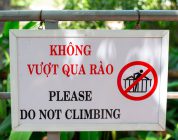![[object Object]](https://www.cheapteflcourses.com/wp-content/uploads/2025/10/3772617.jpg)
As an English teacher abroad, you prepare for grammar drills, vocabulary building, and cultural exchanges. What your TEFL certification likely didn’t cover is how to navigate a classroom conversation that suddenly veers into deeply unsettling and factually incorrect conspiracy theories. Hearing a student you respect articulate dangerous and baseless claims can be a shocking and disorienting experience, leaving you wondering how to respond professionally and constructively.
This scenario is more common than you might think, especially when teaching adult learners whose worldviews are shaped by complex media ecosystems. The classroom can become a mirror reflecting the wider information wars happening online. For an educator, the immediate impulse might be to shut down the conversation or deliver a sharp correction. However, this approach often backfires, causing the student to become defensive and cementing their beliefs further.
Navigating the Moment with Professional Poise
So, what is the appropriate course of action when faced with such a challenging moment?
First, Stay Calm and Avoid Confrontation. Your initial reaction is critical. Maintain a neutral facial expression and do not show shock or anger. A direct, emotional rebuttal will put the student on the defensive and turn a teachable moment into a personal conflict. Remember, your role is that of an educator, not a debater.
Second, Shift the Focus to Language. One of the most effective strategies is to gently steer the conversation back to the purpose of the class: learning English. You can acknowledge the student’s attempt to communicate a complex idea while reframing the objective. For example, you might say, “That’s a complex topic. I notice you used some strong adjectives like ‘evil.’ Let’s look at some alternative vocabulary for expressing strong opinions.” This validates their effort to speak without validating the content of their speech.
Third, Encourage Critical Thinking with Questions. Instead of telling the student they are wrong, ask open-ended questions that gently challenge the logic of the claim. Questions like, “What is the source of that information?” or “How could we verify that statistic?” encourage the student to reflect on the evidence for their beliefs. This models a critical thinking process without direct confrontation. The goal is not to win an argument but to plant a seed of healthy skepticism.
Turning a Challenge into a Lesson
Beyond the immediate response, this uncomfortable situation presents a unique opportunity. You can develop future lessons around media literacy, a crucial skill in the 21st century. Create activities that teach students how to:
- Identify reliable versus unreliable sources.
- Recognize bias in news reporting.
- Discuss controversial topics using neutral and respectful language.
By proactively addressing the skills needed to navigate information, you empower your students far beyond the confines of grammar. You equip them with the tools to engage with the world in a more discerning and constructive way.
Ultimately, teaching English abroad is as much about bridging cultural and ideological divides as it is about verb tenses. Handling these difficult moments with patience, professionalism, and a focus on foundational skills allows you to uphold your educational mission while fostering a respectful and productive learning environment.




